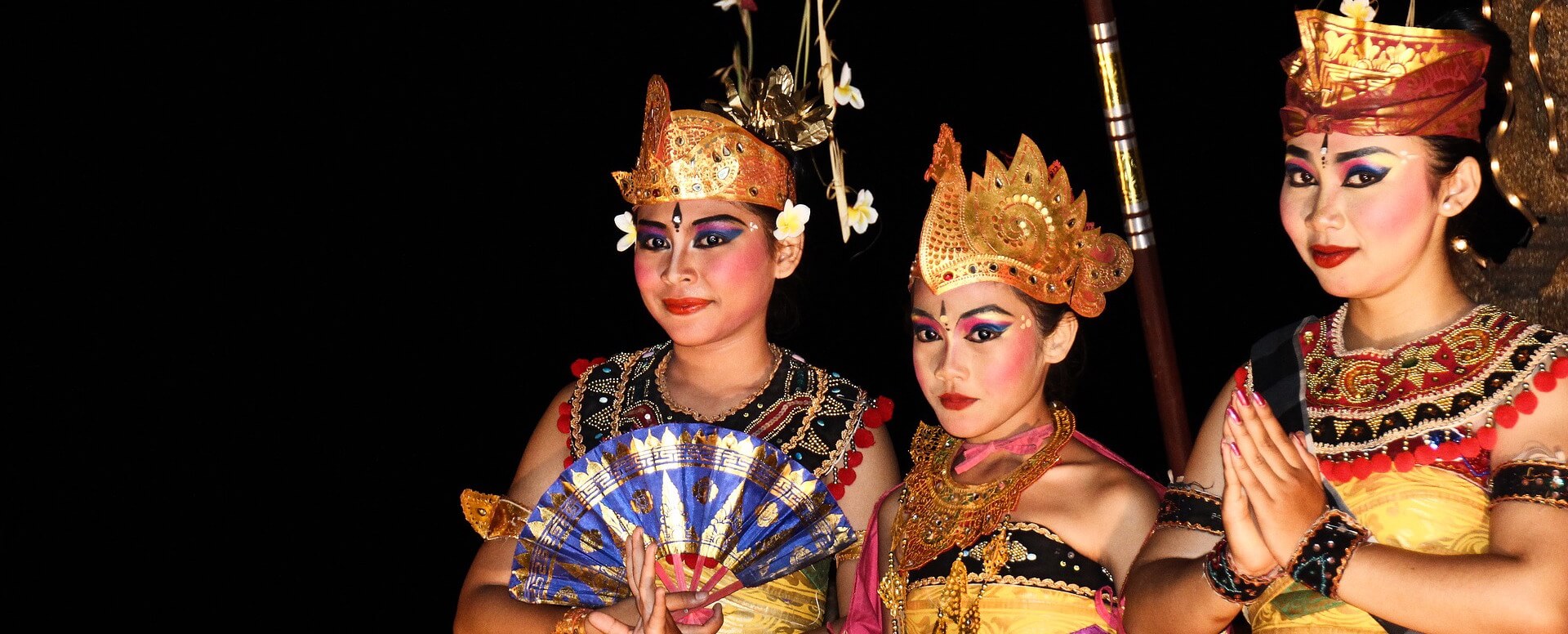The culture in Bali, just like any culture worldwide, plays an important role in shaping a country and its people. Bali is rich in culture and so diverse with its historical influences reflected through the delicious cuisine, astonishing architecture, and inviting people. The culture on the Island of the Gods is so unique and has been influenced by the people with different religious backgrounds. The culture in Bali is portrayed through religion, folklore, dance and rites of passage.
Bali is a country with multiple religions including Muslim, Christian and Buddhist, however the predominant religion is Hinduism. Balinese Hinduism, also referred to as Agama Hindu Dharma, originated in Java and combines Shaivism and Buddhism. Religion in Bali is in accordance with three main principles: desa (place), kala (time), and patra (circumstances) where each principle is influenced by different spirits. The objective of their religious practice is to find and maintain a balance between good and evil forces, thus the Balinese people make offerings to both gods and demons.
Balinese folklore plays a massive part in forming the country’s culture. Leyak are witches, they are ordinary people during the day, but at night they are believed to leave their bodies. They take on many different shapes and things, for example they could be a bird, a ghostly light, a monkey, or even a disembodied head. These people are believed to cause disease or crop failure and even poison food. The Balinese believe that amulets (charms) or mantra (incantations) given by a priest can protect them from these creatures.
Dance is also a very popular way to demonstrate the culture of the Balinese people. Before their performance, many dancers pray at their family shrines requesting holy ‘taksu’ (inspiration) from the gods. The typical movements are made with the legs half-bent and the torso to one side with the arms moving in symmetry to the rest of the body.
Rites of passage are important in life and depending on a family’s wealth and social status, as many as thirteen manusa yadnya (life-cycle rituals) may be performed. Important rites of passage include the sixth month of a pregnancy; the cutting of the umbilical cord; the 12th, 42nd, 150th and 210th days after birth; the first adult tooth; the loss of the last baby tooth; the start of puberty; tooth-filing; marriage; and purification for study.
After death, cremation is performed. These ceremonies are so expensive that it often takes families years to accumulate the funds necessary, so during this time they find a storage or burial spot to temporarily lay the body. During the actual ceremony, the body is carried to the cremation field inside a portable tower and is rotated at each crossroads to ensure that the deceased’s spirit does not find its way back home to haunt the living.
